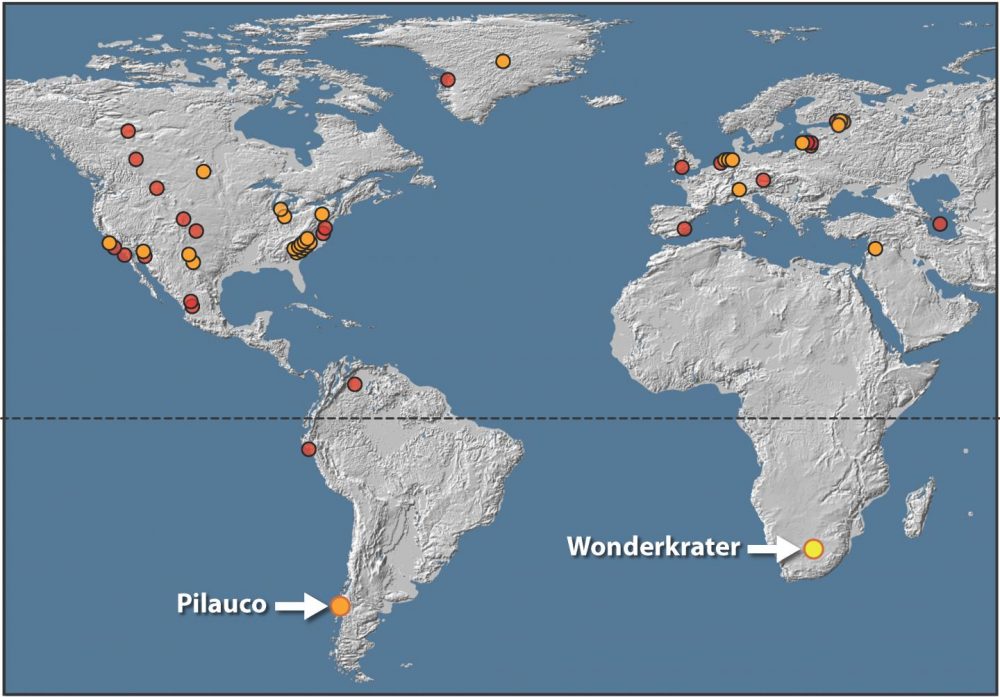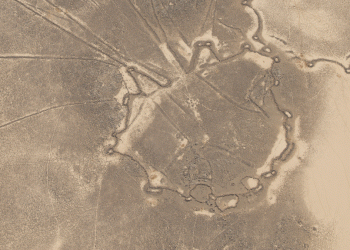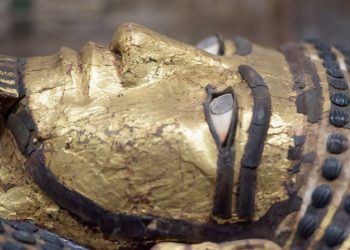Some 12,8000 years ago, when relatively developed ancient cultures already populated the Earth, our planet went through a kind of “global reset” as an asteroid smashed into the Earth, causing the extinction of a great number of larger animal species and changing the history of the Earth in more ways than one.
Although many authors and scientists have speculated that such an event occurred between 13,500 and 11,000 years ago, the evidence was scarce. Scientists have found more evidence in South Africa, which directly supports the hypothesis that a meteorite or asteroid impacted the Earth around 12,800 years ago, causing the global extinction of many large animal species.
Evidence of Mass Extinction by Asteroid?
A team of scientists, led by Professor Francis Thackeray of the Institute for Evolutionary Studies at the University of the Witwatersrand, discovered a remarkable “platinum peak” at a site called Wonderkrater in Limpopo province, north of Pretoria in South Africa.
Working in collaboration with Philip Pieterse of the University of Johannesburg and Professor Louis Scott of the Free State, Thackeray discovered the “platinum peak” within a core drilled in a peat deposit, the sample of which is 12 800 years old. It happens that meteorites happen to be pretty abundant when it comes to platinum.
“Our finding at least partially supports the highly controversial Younger Dryas Impact Hypothesis (YDIH). We seriously need to explore the view that an asteroid impact somewhere on Earth may have caused climate change on a global scale and contributed to some extent to the process of extinction of large animals at the end of the Pleistocene, after the last ice age,” Thackeray revealed in a statement.
Something happened 12,800 years ago, was it an Asteroid?
Around 12,800 years ago, researchers revealed that many mammals became extinct in North America, South America, and Europe. This period is usually referred to as the Younger Dryas. Some notable species of large animals became extinct in South Africa, not necessarily exactly 12 800 years ago, but near that period. This megafauna extinction includes a giant African buffalo, a large zebra, and a very large wildebeest.
The Younger Dryas period returned to glacial conditions, temporarily reversing the gradual climatic warming after the Last Glacial Maximum started receding around 20,000 BP. The new study notes that not only were animal species affected by the asteroid impact.
Evidence of Mass Extinction by Asteroid: Civilization-changing event?
The scientists point out that human populations may also have been indirectly affected immediately following the asteroid impact. In North America, there is a dramatic decline in the Clovis people’s stone tool technology production. Surprisingly, archaeologists in South Africa have detected an almost simultaneous termination of the Robberg stone artifacts industry associated with people in some parts of the country, including the area around Boomplaas near Cango Caves in the southern Cape, the town of Oudshoorn.

“Without necessarily arguing for a single causal factor on a global scale, we cautiously hint at the possibility that these technological changes, in North America and on the African subcontinent at about the same time, might have been associated indirectly with an asteroid impact with major global consequences,” explains Thackeray.
“We cannot be certain, but a cosmic impact could have affected humans as a result of local changes in the environment and the availability of food resources, associated with sudden climate change,” Thackeray added.
Wonderkrater tells a story
Wonderkrater in the Limpopo Province in South Africa is a late Quaternary archaeological site with peat deposits extending back more than 30 000 years before the present. The team came across direct evidence of pollen that just about 12 800 years ago, there was a temporary cooling associated with the “Younger Dryas” temperature drop that is well documented in the northern hemisphere of South Africa.
According to scientists, this cooling in extended areas could very well be associated with the global dispersion of atmospheric dust rich in platinum. Evidence of a catastrophic asteroid impact was also discovered. A massive crater spanning 33 kilometers in diameter was discovered in northern Greenland just beneath the Hiawatha Glacier.
“There is some evidence that supports the view that it may have been where a large meteorite hit planet Earth 12,800 years ago,” says Thackeray. “If this were the case, there must have been global consequences.” Thackeray and his team argue that the discovery of a platinum peak taking place around 12 800 years ago in Wonderkrater is just one small part of the strengthening hypothesis that an asteroid or cometary impact took place at that tie, forever changing the history of our planet and cultures that peaked at the time.
The evidence
The evidence discovered by Thackeray and his team is the first evidence in Africa of a platinum peak that precedes climate change. Younger Dryas peaks in platinum have also been found in Greenland, Eurasia, North America, Mexico, and recently in Chile. According to researchers, wonderkrater occupies the 30th place worldwide for such evidence.
“Our evidence is fully consistent with the Younger Dryas impact hypothesis,” says Thackeray. The discovery in South Africa is expected to be integrated with other evidence found across different parts of the world, acknowledging that the source of the large quantity of platinum at Wonderkrater may be cosmic dust that was dispersed in the atmosphere of the planet after a massive asteroid struck Earth, possibly in what is modern-day Greenland. The study was published in Palaeontologia Africana.
Join the discussion and participate in awesome giveaways in our mobile Telegram group. Join Curiosmos on Telegram Today. t.me/Curiosmos











